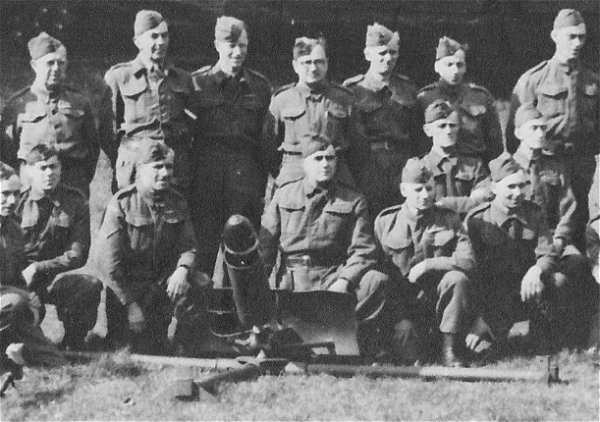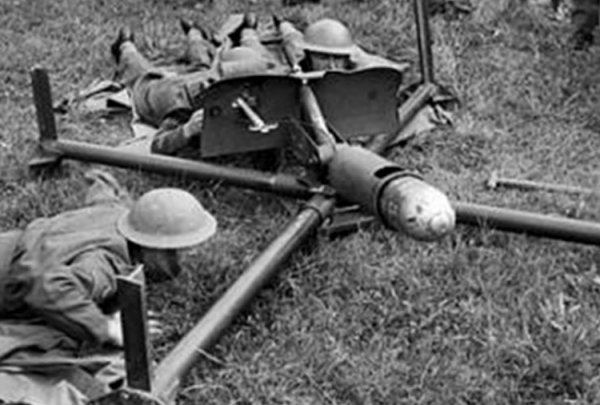yeovil at waR
blacker bombard
Weapons of the Home Guard
The 29mm Spigot Mortar, also known as the Blacker Bombard after its inventor, Lieutenant-Colonel Stewart Blacker, was a stop-gap, close range anti-tank weapon approved by Winston Churchill in 1941 for use by the Home Guard. During the fall of France and the withdrawal of the BEF some 840 anti-tank guns were left in France with a mere 167 left in the whole of Britain. Churchill attended a demonstration of the Blacker Bombard which, it was proposed, would make an ideal temporary anti-tank weapon until the numbers of 2-pounder anti-tank guns could be increased. Churchill was so impressed by the demonstration he ordered that production start straight away.
It was a fairly crude weapon lacking a barrel but having a steel 'spigot', a steel rod attached to a base plate. The propellant charge was located in the tail of the bomb itself and when the bomb was positioned on the spigot and pushed down the spigot would cause the propellant to explode with the result that the bomb would fly into the air. The Blacker Bombard could be mounted on a steel pin set within a concrete block or could be used on a large, moveable cruciform mounting, as shown in the photograph below of the Yeovil Home Guard example. It had a crew of three and could fire a 20 lb (9.1 kg) anti tank projectile up to about 80 yards (73m). It was also supplied with 14 lb (6.4 kg) anti-personnel projectile.
Adapted from my e-book "A Photographic Guide to the Taunton Stop Line"
gallery

Courtesy of Rob
Baker
A remarkable weapon, the 29mm Spigot Mortar, also known as the Blacker Bombard after its inventor, Lieutenant-Colonel Stewart Blacker, was a stop-gap, close range anti-tank weapon approved by Winston Churchill in 1941 for use by the Home Guard. This photo is of the Yeovil Home Guard with their Blacker Bombard.

A Blacker Bombard being used on its cruciform mounting.